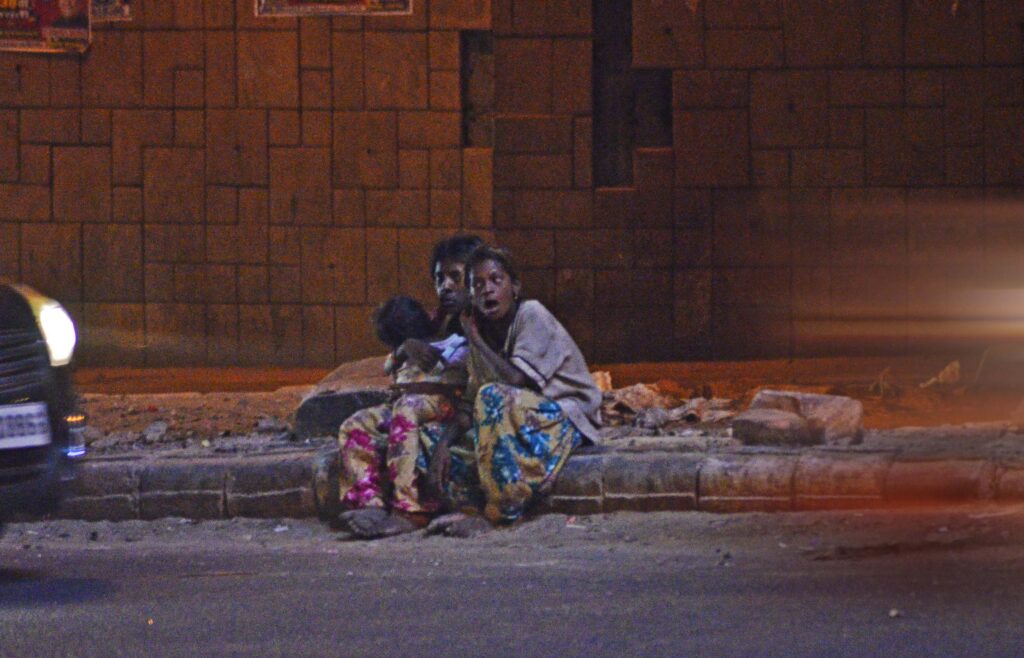District: Central Delhi
Chandni is among the thousands of street children in Delhi, who are bearing the brunt of the pandemic and the lockdown that follows. Often, neither them nor their families are aware of the relief measures being extended by various state and non state agencies. The lives of these street children have taken a turn for the worst since the first nationwide lockdown was announced in April 2020.
With 472 million children, India has the largest child population in the world and researchers say the lockdown has impacted around 40 million children from poor families. These include those working in farms and fields in rural areas, as well as children who work as ragpickers in cities or sell balloons, pens and other knick-knacks at traffic lights. The plight of homeless children in national capital is no different. The Voices explores.

Chandni, who lives in a make-shift shack near Patel Nagar in New Delhi, recalls, “When the lockdown was announced, my parents who worked as a house-help and a rickshaw puller lost their jobs. Everyone was told to stay home. But without any money, where could we go?”

While people were trying to save themselves by wearing masks and staying at home, these children were struggling to find a roof, and their next meal. Protection was least on their mind as most kids said they lost all ambition. “My family’s income plummeted to zero in the lockdown. I wanted to go to school and study, but now that dream seems unlikely”, says Santosh. He used to live with his family under the Rajinder Nagar flyover.
Last year, a survey conducted by the Delhi Commission for Protection for Child Rights (DCPCR) across the national capital identified over 70,000 street children. Even before the lockdown, these kids struggled getting their daily meals and relied on money given by the commuters. With the lockdown, that option was also shut for them.
The DCPCR has been distributing food to street children and vulnerable families in the Indian capital. But without being registered in the system, it is very difficult to track and reach out to them. Jamal, who lives with his family near Shadipur slum says, “Sometimes people used to come and distribute food. I have no idea who they were, but the food was very little. We only got to eat once in two-three days.”
These kids saw a ray of hope, when lockdown restrictions were relieved and the city started to move again. Some joined local shops, some went back to factories and others came on to streets to make a livelihood for themselves. However, with the current rise in the COVID-19 cases, and Delhi already under a strict curfew, uncertainty has once again dawned upon these children.
“We have not yet recovered from last year. Going through the traumatic lockdown again and again is actually grilling”, says Saholi. She lives on the streets with her family of 10 people.
Scale of the problem is daunting and if not anything else, the government must ensure that the children are fed three meals a day and have a roof to sleep under. In the recently imposed second edition of lockdown in Delhi, Delhi High Court, in response to a plea by representatives of slum dwellers, and homeless children, issued notice to Central Government, State Government, Delhi Police, National Human Rights Commission to coordinate and ensure food, shelter, and financial assistance for these people. The substance manifesting out of such promising interventions would a subject for the scrutiny of times to come. But experts believe a comprehensive strategy in advance will certainly reduce the vulnerability of these groups if cities are forced to choose lockdown as a last resort in upcoming waves of the Pandemic.
Photos by Shivangi
Story edited by NK Jha


1 Comment
The choice of the subject in itself is appreciable. And the voices from the ground are really gut wrenching